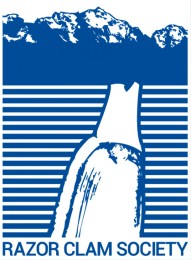
According to a a recent press release issued by Washington Department of Fish & Wildlife (WDFW), the previously announced Washington razor clamming season opener, tentatively scheduled for October 6-7, “hinges” on additional toxin test results.
State shellfish managers said they had hoped to announce on September 27 whether the tentatively scheduled dig would proceed. However, state health officials have asked for an additional round of toxin tests due to rising levels of domoic acid. A natural toxin produced by certain types of algae, domoic acid can be harmful or even fatal if consumed in sufficient quantities.
Learn more about the testing process and marine toxins here.
Toxin test results are expected Tuesday or Wednesday of next week.
The tentatively scheduled dates for the season opener occurring on evening low tides and beaches are as follows:
- Oct. 6, Friday, 7:49 p.m.; -0.4 feet; Long Beach, Twin Harbors, Copalis, Mocrocks
- Oct. 7, Saturday, 8:33 p.m.; -0.7 feet; Long Beach, Twin Harbors, Copalis, Mocrocks
Be sure to check our beach map to find your beach:
The DAILY LIMIT per person is 15 clams, no matter what condition they are in, once removed from the sand. That limit is subject to change. Always check with official sources if you have any questions. Digging prior to Noon during the Fall Season on the approved days is not allowed. All diggers age 15 or older must have an applicable fishing license to harvest razor clams on any beach. Licenses, ranging from a three-day razor clam license to an annual combination fishing license, are available from license vendors around the state and WDFW’s licensing customer service number at (360) 902-2464.

